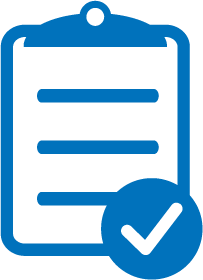Four Suggestions for Effective Software Asset Management
An employee from the accounting office in a very large organization noticed a discrepancy with a software renewal bill. The software bill was for 1,300 software licenses; however, the department using the software only had 300 users. The accounting office also noted the organization had been overpaying the renewal for the software licenses for three years. It took a closer look at their business processes so that they could determine why they had purchased 1,300 licenses for 300 users.
Every year, this organization went through a hardware refresh of approximately one third of all PC/laptops. When analyzing how hardware and software assets were purchased, they noticed the employee that was assigned to purchasing computers and laptops kept track of all the purchases using a spreadsheet. This person would then issue a PO for the software licenses needed for software to be installed onto the new PC/laptops.
Next, the organization looked at how PC/ laptops were disposed. They determined the person who was in charge of disposing of PC/laptops during the hardware refreshes also used a spreadsheet to keep track of PC/laptops that were decommissioned. There was absolutely no communication between the two people or the two processes.
The conclusion of the investigation determined that the organization was actually throwing away usable software licenses during the hardware refresh. Software licenses assigned PC/laptops that were decommissioned were not reassigned to the new PC/laptops that replaced them. The root of the problem was simple; they did not have a process or software tools in place to properly track and manage their software licenses.
Avoid Using Spread Sheets
Avoid using spreadsheets to track your software licenses; instead, use a software asset management database to track licenses. Link software licenses to the PC/laptops where the software is installed. Create a process that removes the link between software license and PC/laptops that are to be decommissioned. Show software licenses that are no longer linked to a PC/laptop as “available” so they can be linked to new devices as needed.
Use discovery tools to discover and track software that is installed on the end-user devices.
Inventory should be obtained from your devices on a regular bases. Configure automated discovery tools that report back to an asset management database. This will ensure an up-to-date accounting of all installed software.
Track Software Usage
Use software discovery tools that have the ability to track software usage. When tracking software applications, it is beneficial to know if applications provided are being used by the end-users. It is helpful if your software asset management tool has the capability to report if software has not been used in 30 days, 90 days, six months, one year, etc. Collecting usage information allows you to re-allocate licenses from users who do not use the software instead of purchasing additional licenses.
Setup a Self-Service Request Portal
Setup a portal for the employees who are responsible for ordering software and hardware. A request portal can be linked to automated ITIL processes that use a Service Catalog. The request portal should update the asset management database when a purchase order is issued with any new hardware/ software assets.
This article was previously published at marcelshaw.com
